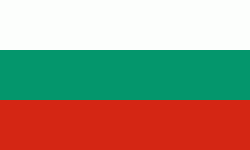Velingrad
 |
The cultural layers give grounds to claim that the Chepino region was inhabited by Thracian tribes in the 6th-5th century BC. The ancient historians Herodotus and Thucydides provide written records of this era.
The authority and importance of the temple of Dionysius in the Rhodope Mountains is indicated by the fact that Alexander the Great and the father of Octavian Augustus visited it to have the prophetess divine their future.
There are many tombs left from the Thracians - seven in the Batak Marsh (now the bottom of a lake), two mounds in the Yundola area and dozens elsewhere. Ruins of Thracian settlements and fortresses can be seen in the locality of "Pechkovets", at the foot of the medieval fortress of Tsepina, where fragments of Thracian pottery and implements of labour have also been found, and elsewhere.
The Romans conquered the Rhodope Mountains fully after invading Thrace in 45 BC. It began with a mixed Thraco-Roman period that lasted until the arrival of the Slavs. The archaeological finds of settlements and fortifications in the areas to the Roman culture in this region. These are the remains of clay pipelines for mineral water, road pavements, fortifications, marble slabs, coins, etc.
The region was inhabited by the Slavs in the 6th century. According to Bulgarian academics, the Dragovichi tribe lived there. The Dragovichi accepted many Thracian customs, but gave them typical Slavic characteristics. Soon after the Bulgar invasion of the Balkans, the whole region was annexed to the First Bulgarian Empire by Malamir.
Coins from the time of Tsar Ivan Alexander have been found in Chepino. It is believed that the fall of the Tsepina fortress and the whole region under Turkish rule took place in 1371 - 1373. After this event a number of serious changes occurred in the life of the local Bulgarians. The Ottoman Empire needed allies in its centre and began to impose Islam voluntarily or by force as early as the beginning of the 16th century.
The Ottoman register referring to the years 1516 - 1517 indicates the appearance of the first muslims in the area. At that time, there were a total of 624 households in the villages of Chepino, 12 of which were Muslim. The Bulgarians bore names such as Velcho, son of Zlatko, Petko, son of Rayo, Radul, son of Proslav, etc., while 7 households from Lajene used the Arabic Abdullah as their surname, which is usually given to all converts to Islam. These 7 households possessed a full pair, i.e. a piece of land which was believed to be able to provide a good material position for a family.
According to the Pope Metodi Draginov, at the time of the storming of Chepino by Mehmed IV, part of the population was forced to convert to Islam, because the Greek bishop Gavril accused the local population of being disobedient to the pasha in Plovdiv. When the pasha arrived in Chepino, he gathered the princes and demanded to kill them, but they converted to Islam in the hope that they would be spared. Bulgarian Muslims have preserved many of the traditions of the Christian cult.
The population of Chepino did not stay away from the Revival and the national liberation struggles of the Bulgarian people. In 1816 the church St. Trinity . It became a centre where Bulgarian consciousness was strengthened and knowledge and enlightenment were spread. In 1823, a school was opened in the church, initially as a cell school, and later as a class school, housed in a separate building. The first teachers were Iliya Zhdrakov, Peacock Gugalov, Daskal Parthenius, Daskal Nikola Saev, who introduced as a textbook the "Fish Literary", Georgi Cholakov - Grandfather Daskal, Sava Doktorov, Stoyu Maslarov.
Map - Velingrad
Map
Country - Bulgaria
 |
 |
| Flag of Bulgaria | |
One of the earliest societies in the lands of modern-day Bulgaria was the Neolithic Karanovo culture, which dates back to 6,500 BC. In the 6th to 3rd century BC the region was a battleground for ancient Thracians, Persians, Celts and Macedonians; stability came when the Roman Empire conquered the region in AD 45. After the Roman state splintered, tribal invasions in the region resumed. Around the 6th century, these territories were settled by the early Slavs. The Bulgars, led by Asparuh, attacked from the lands of Old Great Bulgaria and permanently invaded the Balkans in the late 7th century. They established the First Bulgarian Empire, victoriously recognised by treaty in 681 AD by the Eastern Roman Empire. It dominated most of the Balkans and significantly influenced Slavic cultures by developing the Cyrillic script. The First Bulgarian Empire lasted until the early 11th century, when Byzantine emperor Basil II conquered and dismantled it. A successful Bulgarian revolt in 1185 established a Second Bulgarian Empire, which reached its apex under Ivan Asen II (1218–1241). After numerous exhausting wars and feudal strife, the empire disintegrated and in 1396 fell under Ottoman rule for nearly five centuries.
Currency / Language
| ISO | Currency | Symbol | Significant figures |
|---|---|---|---|
| BGN | Bulgarian lev | лв | 2 |
| ISO | Language |
|---|---|
| BG | Bulgarian language |
| TR | Turkish language |















